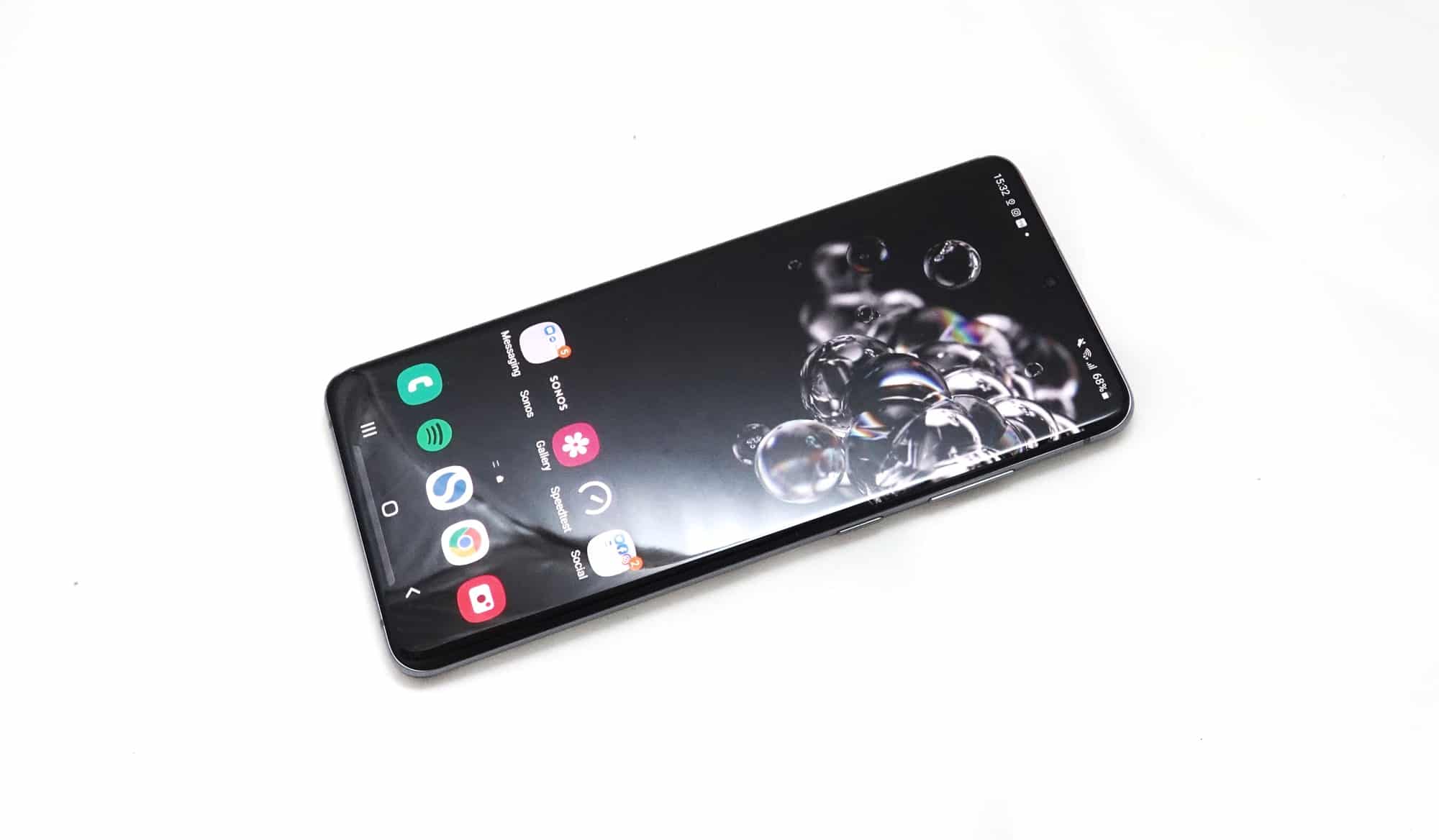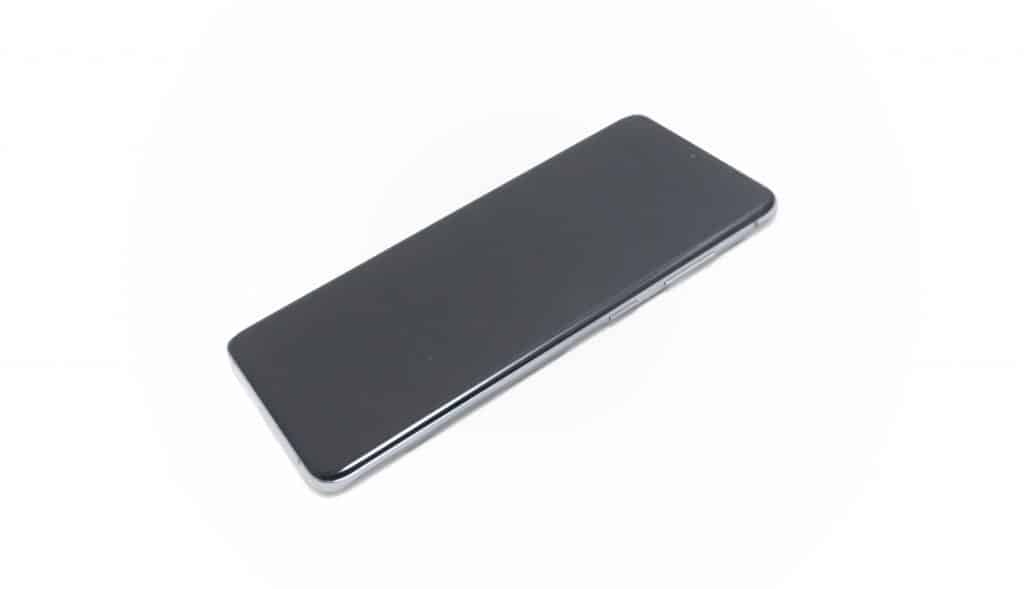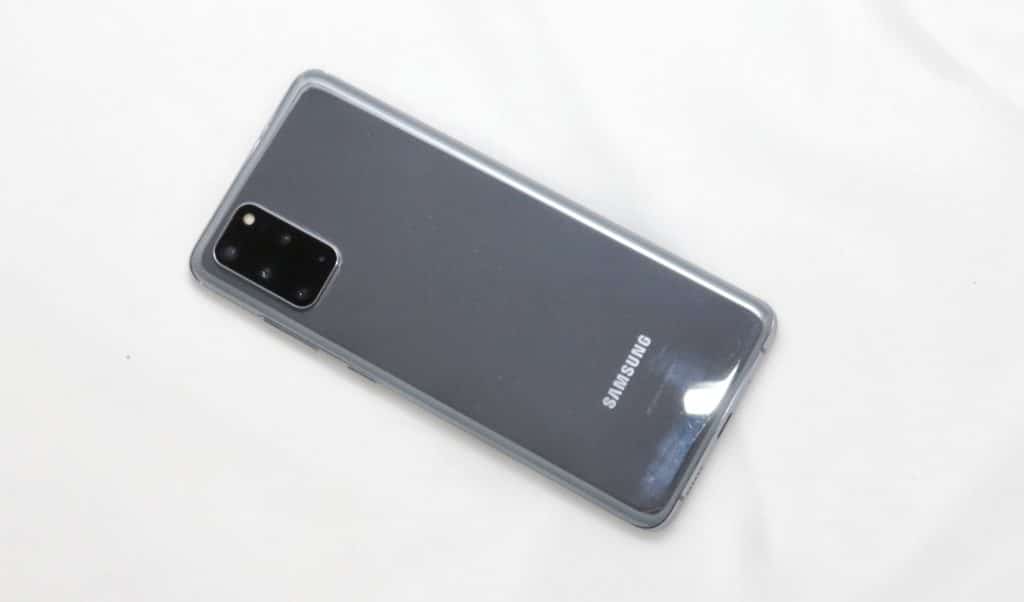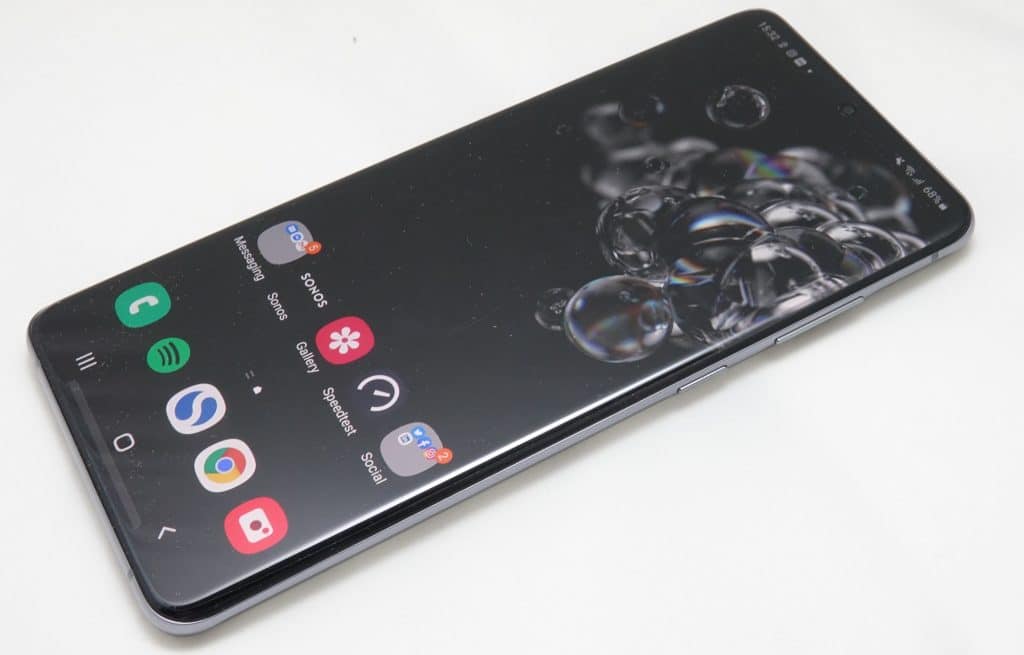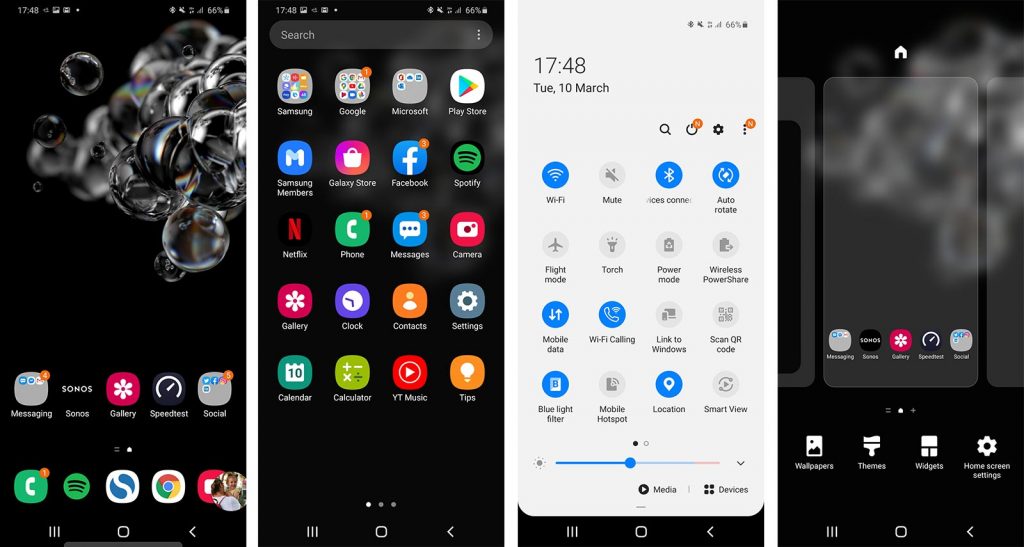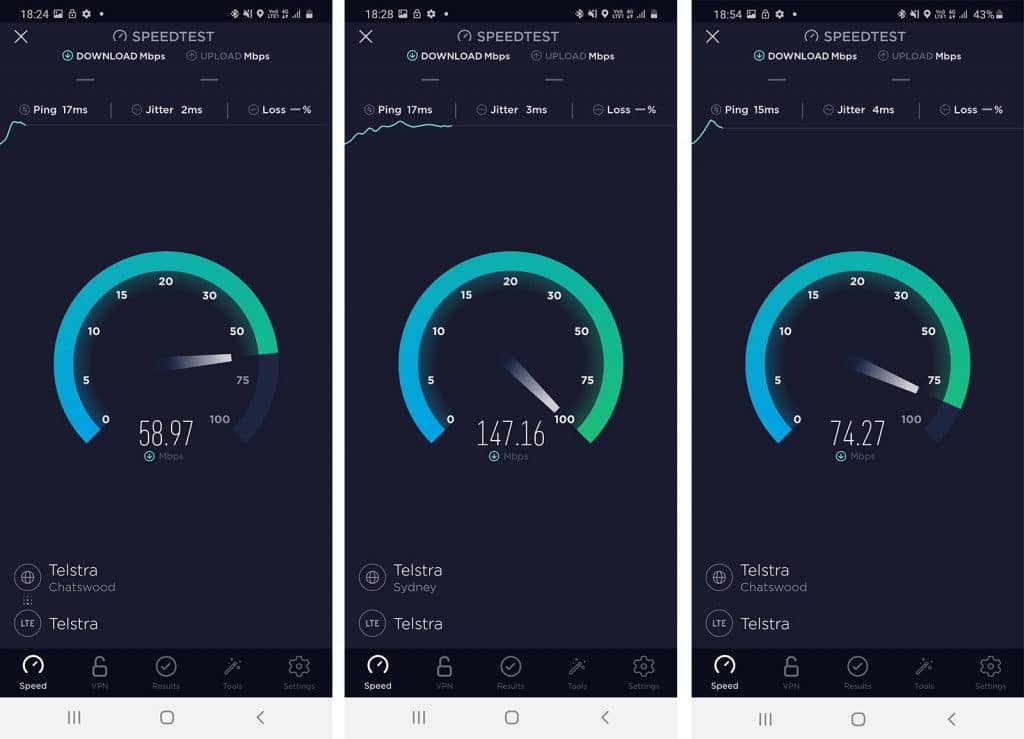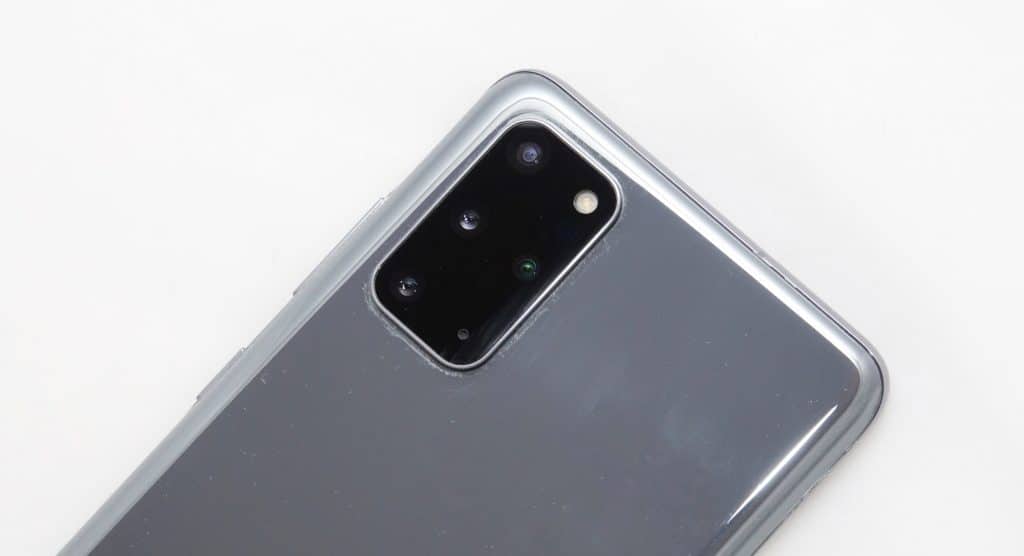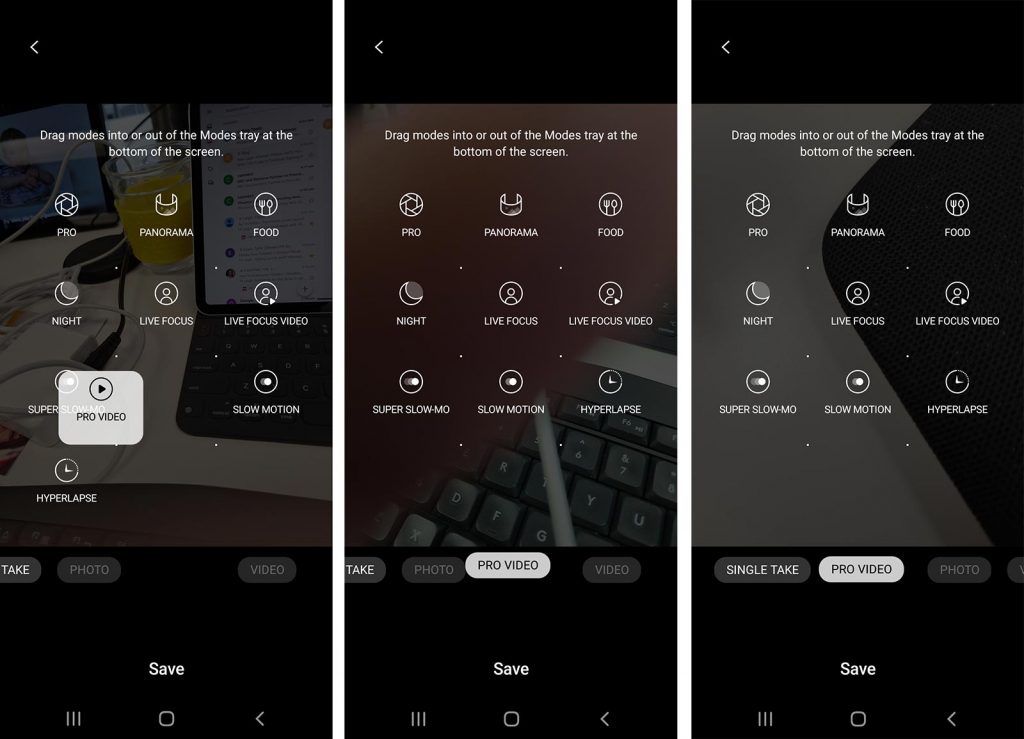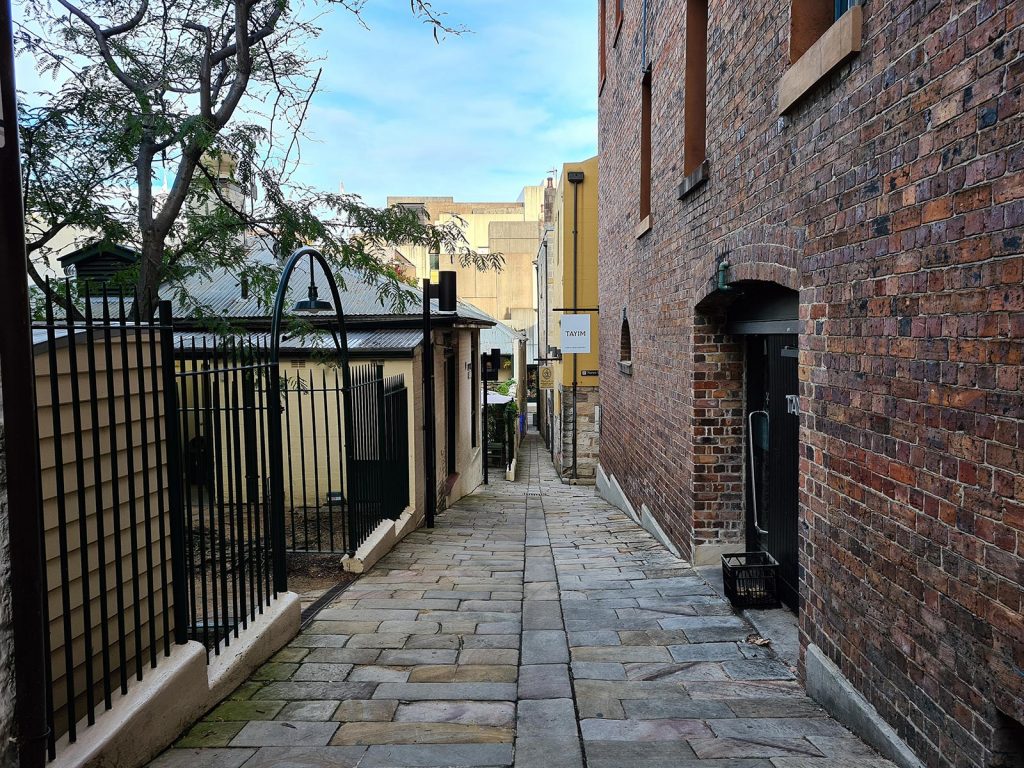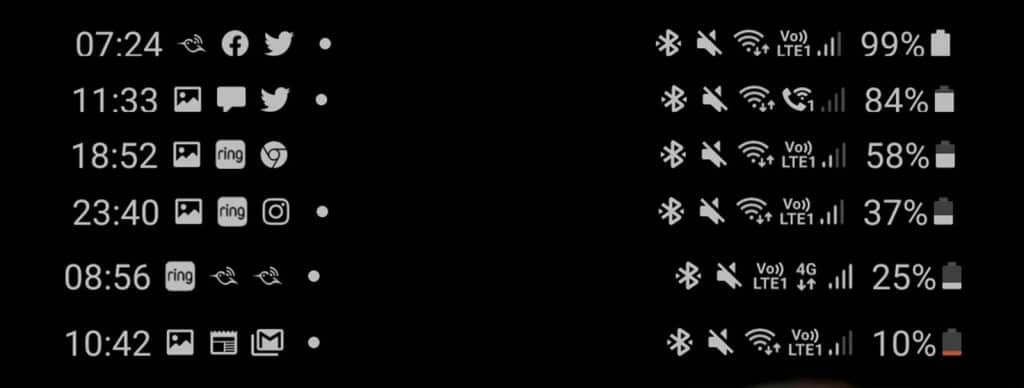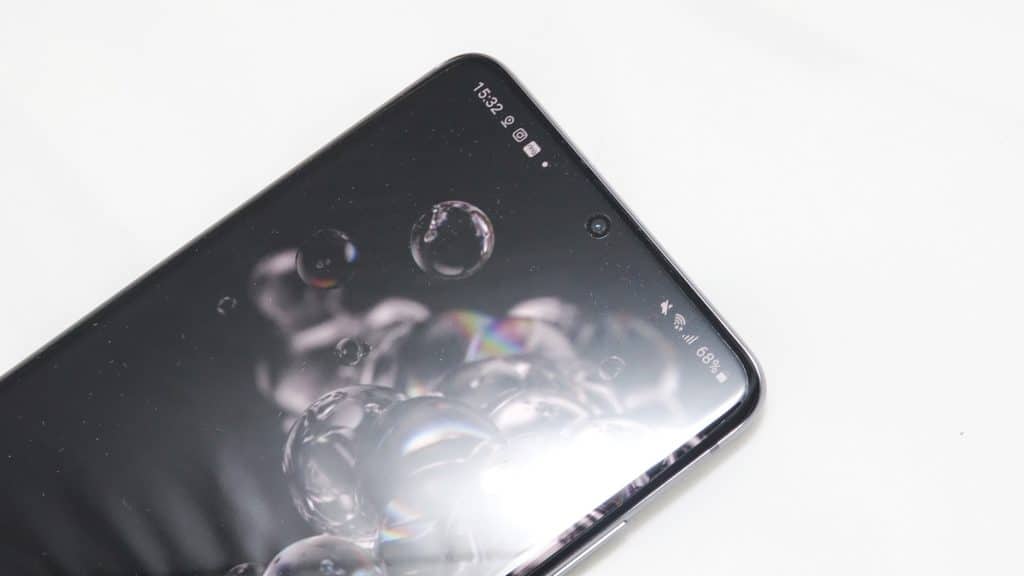Quick review
The good
The not-so-good
The year of phones is starting slowly, but that doesn’t mean there’s nothing new. If you don’t need an “ultra” big phone in your life, Samsung’s more normal-sized Galaxy S20+ could be the right fit.
New phone releases this year are offer to a bit of a slow start. With Mobile World Congress cancelled and the COVID-19 coronavirus crisis making a dent on the world, new phone models aren’t exactly rolling out in mass numbers.
But if you did want something new, there are options. In fact, before Mobile World Congress was cancelled, Samsung announced a few phones in the Galaxy S20 range, and they’re out.
While much of the attention is on Samsung’s big model, the Galaxy S20 Ultra, we think the Galaxy S20+ is more likely to grab attention, with a relatively normal price by today’s standards, and yet a large screen and comparable feature set.
So what’s new about the S20, and what do you get in the Samsung Galaxy S20+?
Design
Samsung’s largest spin on the Galaxy S range is one that evolves what we’ve seen for the past few years, but only modestly, with a slick all-screen design and most of the changes to the back, where the camera has moved from the top middle to the top left.
It seems this top left corner is the new place for cameras, with the back offering a bit of a bump for the four cameras now found on the back, while the front takes on aspects of the Note10’s look.
You see last year, Samsung made the Galaxy S10 look like it has a camera punched out of the top side of the screen, producing a bit of an unbalanced look. This was fixed in the Note10+ and Note 10, throwing the camera to the centre, which is what the S20, S20+, and S20 Ultra borrows from.
Outside of those minor changes, you may not noticed a whole lot of difference. There’s a glass front and back with minimal bezels, and a slick feeling that can slide right off desks and tables, so just be cautious.
Features
Under that slick and slippery glass body, you can expect some new parts, because it’s 2020, and that means new gear aplenty.
As such, Australian Galaxy S20 owners will see Samsung’s Exynos 990 chip in their phones, a difference from the Snapdragon in American counterparts. Both chips are eight-cores, yet made differently, though all paired with either 8GB RAM in the 128GB model, or 12GB RAM in the 512GB model. The model Pickr reviewed was the Galaxy S20+ with 8GB RAM and 128GB storage. Regardless of the model you choose, you’ll find a microSD slot inside.
And you’ll also find Android 10 with Samsung’s One UI skinned over the top, providing Samsung’s take on what Android should look like.
Cameras on the phone are varied quite well, thanks in part to this being a flagship phone, with a 12 megapixel standard wide F1.8, 12 megapixel ultra-wide F2.2, 64 megapixel F2.0 telephoto, and a “DepthVision” camera to identify the background for Samsung’s “LiveFocus” background de-focused imagery. The camera array there is also equipped to handle and capture 8K Ultra HD video, as well as support for the more commonly found TV formats of Full HD and 4K Ultra HD. At the front, there’s a 10 megapixel F2.2 selfie camera.
Connections are quite typical for a flagship these days, with no 3.5mm headset jack, and USB Type C the only physical connection, used for audio, data, and charging.
Wireless is quite friendly, though, thanks to support for 802.11a/b/g/n/ac/ax WiFi 6, Bluetooth 5.0, Near-Field Communication (NFC), GPS, and either 4G LTE on the 4G model, or 4G and 5G on the 5G model. The Galaxy S20+ we reviewed was the 4G model.
Finally, there’s a fingerprint scanner built into this phone, encased in the 6.7 inch curved Quad HD+ 120Hz 3200×1400 screen, a mouthful of a statement. The screen sits atop a mostly glass body measuring 7.8mm thick and weighing 186 grams, with water resistance included in the design.
The Samsung Galaxy S20+ features a 4500mAh battery and supports wireless charging.
In-use
With a spec sheet like that, we’re expecting something pretty solid, and so when you switch on the phone to reveal that massive mostly all-screen design light up, you probably won’t be remarkably surprised: the Galaxy S20+ is a great looking phone with a beautiful screen.
Samsung has made some nice improvements to design, and when you up the S20+, while it has heft, it’s not an unwelcoming amount of weight. Not a bit.
Granted, it is quite large, but that’s the feel of things these days, with the glass front and body delivering a slick feel that you’ll be concerned about leaving on slightly slanty surfaces, so make sure that table and desk is balanced appropriately.
The screen is also very pretty, with the 6.7 inch Super AMOLED display lovely and bright, and the screen improvements helpful, because with the support of a 120Hz screen, using your phone now looks more slick and clear. The 120Hz smooth mode will only work on a Full HD screen resolution (and default back to 60Hz on the higher res Quad HD), but when it’s engaged, swiping up and down on your phone looks clearer than it ever has.
This is helped by Samsung’s One UI, which feels tighter and more refined, and delivers a slick version of Android outside of Google’s own look. Helped by years of work and design, Samsung’s take on Android looks about as good as Google’s, and is friendly to all, new user or the vastly experienced Android aficionados.
Performance
Alongside that lovely interface and approach to Android is a performance that handles pretty much everything you throw its way.
In Australia, the Galaxy S20+ gets the Samsung-made Exynos 990 processor, pairing it with a pretty generous 8GB, which helps the phone feel lightning quick for pretty much anything you use it for.
Load apps like you regularly do, and you’ll find the Exynos handles itself across the gamut of activities, from apps to games and even those speed tests we had to use the phone for.
On the speed test front, the Galaxy S20+ we reviewed was the 4G option, which isn’t going to be as hyper-fast as the 5G model Samsung offers, but is also no slouch, either.
Tests in Sydney, Australia on the Telstra 4GX network delivered speeds as high as 147Mbps, though 75Mbps was more consistent, more or less providing great performance, network dependent, of course.
Camera
With solid performance, you can expect a fairly solid camera. This is a flagship phone, after all, and so you’re getting some of the best of what Samsung has to offer, with “some” cited because Samsung is separating its camera technology through the range depending on how much you plan to spend.
If you spend up properly big, you get hit massive 108 megapixel sensor and 100x digital “space” zoom of the Galaxy S20 Ultra, but in the S20+, it drops a little.
Instead, you’ll find a 12 megapixel standard wide F1.8 alongside a 12 megapixel ultra-wide, plus a 64 megapixel F2.0, and a depth camera for background de-focused imagery such as in the portrait mode. That’s a pretty obvious difference, though it’s not one without its merits.
While you don’t get the ridonkulous zoom of the S20 Ultra, you can still get surprisingly close, plus some decent low light imagery, not to mention some crisp shots in daylight, offering lovely colours and sharp visuals.
Samsung’s take on portrait mode still isn’t the best in the business, and while “live focus” has merits, it hasn’t quite nailed the ease of use or the quality we’ve seen from competitors, such as Apple or Huawei.
One area Samsung has made a mark in is changes to the software.
In the Galaxy S20 range, Samsung allows you to edit the camera mode interface, letting you (finally) move the modes you use most into your own camera, which speeds up how quickly you can get around the camera options.
There’s also a lovely new and novel inclusion we fell in love with called “Single Take”. Think of this as an AI-based camera with good intentions that not only applies filters and special looks to your images, but captures imagery and video over a series of seconds, and then spits out images and videos it thinks you’ll like. The images could be of the Instagram-filter variety or portraits you might have wanted, or even short boomerang videos Samsung thinks you’ll want to use, but the idea is that it’s doing all of the heavy lifting for you and making images and videos easier over a few seconds of capture.
That’s the idea. The result is more of a fifty-fifty crapshoot where Samsung Single Take can work really well, and then not at all. You won’t know until after you’ve used it, and that’s really the frustrating part.
There were times where Single Take achieved some really lovely images, and others where it failed to capture any, spitting out only videos of scenes where we had really wanted images. We found ourselves using Single Take more than any other feature, and half the time, found it failed to spit out anything more than a few videos, completely missing the mark entirely. It’s a frustrating situation, too, because you can see the images you want it to capture, yet it doesn’t always nail it, or any of it.
When Single Take works, it’s great. When it doesn’t — and it doesn’t regularly — it’s the exact opposite, and something Samsung needs to amend ASAP.
At least the company has made a dent to the world of 8K, because while there’s still a lack of content for the few 8K TVs in the world, you can capture in 8K if you really want to on the Samsung Galaxy S20+. Granted, you’ll want an 8K TV if you want to play it back at maximum quality, but it’s a neat inclusion all the same, especially given there aren’t many 8K capable cameras out there either way.
The front camera is also not bad, the 10 megapixel shooter firing off decent selfies when you need them, which can be a little further back or close.
Battery
But the battery doesn’t seem like it offers any improvement, and much like the S10+ before it, and the S9+ before that, and even the S8, the run time of the Samsung Galaxy S20+ seems up hot a little over 24 hours.
In our tests with the S20+, we saw around 30 hours with 120Hz on the Full HD mode, and 22 with Quad HD at the standard 60Hz.
Now this is a reasonably big smartphone, and should be aiming for the day and a half to two days we can achieve on the iPhone 11 Pro Max and Huawei P30 Pro models, and yet that’s not what you get here.
There’s another factor worth noting here: our Galaxy S20+ review model was the 4G variant, which will likely make an impact on battery life. Switch to a 5G model, and our experiences with the first 5G phones suggests battery would slightly drop due to the difference in technology.
Extended testing didn’t change much, either, with the Galaxy S20+ only achieving a full day of life, but typically seeing our charger on a nightly basis.
We have to say this is fairly normal for Samsung, but it’s not the definition of “normal” that we like.
The year is 2020, and this sort of one day of performance for a flagship phone shouldn’t be the target; people should expect two days of life out of their big phones. And yet that’s not what this phone is. It’s a one day phone, which is a pity given how high-end a device it is.
Value
That one day of battery life is a shame for another reason: at $1499, the Samsung Galaxy S20+ is not a cheap phone. Not by a long shot.
Much like the normality of mediocre battery life, a phone price fetching between a thousand and two thousand is also normal, frustrating as it may be.
Despite this, we don’t necessarily think it’s a great value so to speak, even if the price is “normal”.
In fact, at a starting price of $1499 for a 128GB phone, we’re not sure Samsung is hitting value all that well, either. Yes, it’s less expensive than the iPhone 11 Pro and Pro Max, which these days start from $1749 and $1899 respectively, and for 64GB. One could argue Samsung is definitely value.
But both phones are still expensive, and while Samsung’s and Apple’s both come together, you can’t help but feel aspects need ironing out, such as the meh battery life where nothing has changed and a camera mode that doesn’t quite do what is advertised on the box.
What needs work?
Aside for a mediocre battery life, concerning price, and a Single Take camera mode that desperately needs some fixes applied, you’ll want to throw your attention to work needed on the fingerprint sensor, as it’s still not very good.
Version one of the in-screen fingerprint sensor in the Galaxy S10 range wasn’t fantastic, and version two in the Galaxy S20 hasn’t made things much better. Thank goodness there’s a facial login system alongside, because that makes the security just that much easier to work with, but the fingerprint sensor by itself is slow and hardly efficient.
“Slow” is also a word you can apply to the camera, frustratingly. For the most part, even though the cameras are better than they have been previously, the speed isn’t, and so while Single Take offers a fifty perchance chance of not giving you what you want, expect the Galaxy S20 to take an extra half second to take that photo.
Final thoughts (TLDR)
Despite a set of flaws that become obvious the more you use the Galaxy S20+, Samsung has built a very nice phone, and it’s even one that comes with a feature Samsung users are sure to love: no more Bixby button. It’s nice that Samsung has finally decided a superfluous button was rather silly for design, even if it’s still integrated, albeit when you hold a different button down. Baby steps, it seems.
For now, it’s a good start for 2020. The Galaxy S20+ is a slick new phone for the Android elite, and makes us excited for what else is on the horizon. A few months into the new year, there’s been very little else to arrive built to impress, though for some fairly obvious reasons.
At the start of 2020’s phone season, the Galaxy S20+ provides a good refresh for Android owners wishing the new season would just get on with it, though Samsung needs to release fixes ASAP. Fix the Single Take mode, the camera speed, and the battery life, and Samsung is sure to have a winner.



